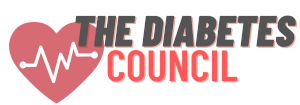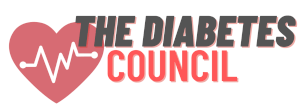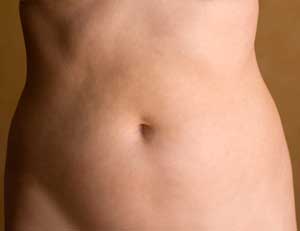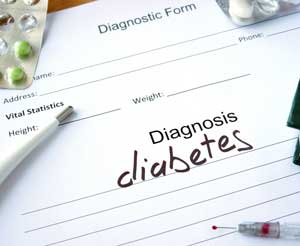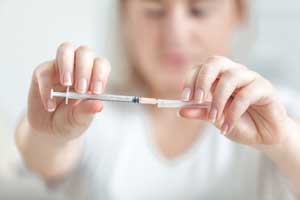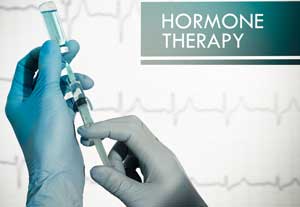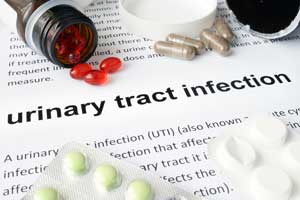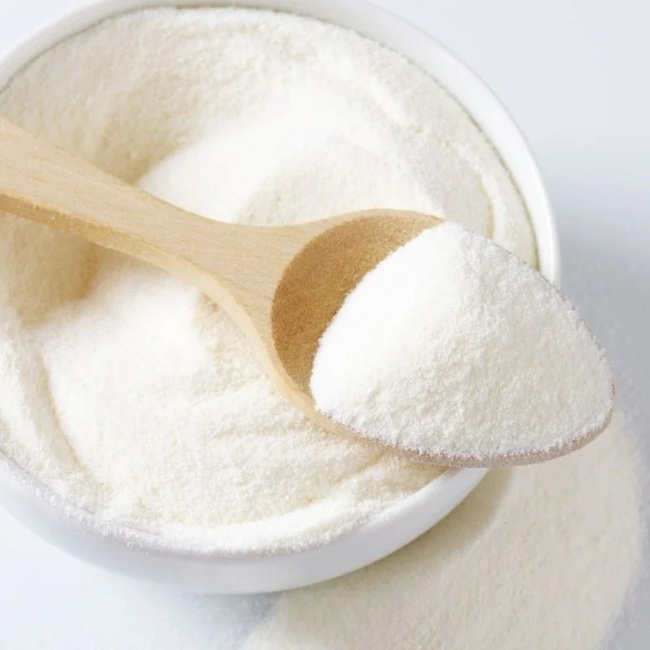According to the Centers for Disease Control and Prevention (CDC), the United States has the highest rate of diabetes cases in the developing world and it is still increasing in an alarm rate. In 2016, it is estimated that 1 in 10 US individuals have type 2 diabetes (the increase rate of type 1 diabetes is much smaller).
By 2050, it is estimated that 1 in 3 individuals will suffer from type 2 diabetes. From the statistics, overweight individuals who are age 40 or older are in the highest risk percentile. How does this information important for women?
In the United States, diabetes is ranked as the number 6 most common cause of death for females between 45 to 54 years old and the number 4 common cause of death for females who are between 55 to 64 years old. It seems that as women grow older and reach their menopause stage, they become much more susceptible to develop diabetes. The question is whether menopause can drastically increase the risk of developing diabetes? This article will answer this question along with covering various topics that concerns menopause and its effect on diabetes:
[accordions id="3653"]
Contents
- Can Menopause Can Trigger Diabetes?
- Menstrual Cycle and Diabetes
- Can Diabetes Affect Your Menstrual Cycle?
- Tips of Managing Diabetes for Menstruating Women
- What is Perimenopause?
- How Does Perimenopause Affect Women?
- What are Other Perimenopause Symptoms?
- What is Metabolic Syndrome?
- How to Prevent or Overcome Insulin Resistance?
- Tips to Reduce Chance of Developing Diabetes during Menopause
- What to Expect for Diabetic Women Going Through Menopause
- Is Menopause or Diabetes Causing These Symptoms?
- What to do About Your Diabetes Conditions?
- Will Hormone Therapy (HT) Prevent Diabetes?
- What is the Purpose of Hormone Replacement Therapy?
- Is Hormone Replacement Therapy an Option for Me?
- Alternative Options for Treating Menopause Symptoms
- Coping with Hot Flashes
- Coping with Weight Gain
- Coping with Vaginal and urinary Symptoms
- Coping with Incontinence
- Coping with Mood Swings
- Conclusion
Can Menopause Can Trigger Diabetes?
We would like to give you a straightforward answer for this question. However, sadly, health research scientists are still struggling to find the answer because it is difficult to separate the correlation and effects of menopause from the correlation and effects of age and weight. In 2011, a scientific correlation study suggests that after taking the age factor out from the correlation study, there is “no association between natural menopause or bilateral oophorectomy and diabetes risk” (Kim, 2011). Yet there have been studies suggesting that progesterone is correlated with the development diabetes. Although we cannot give you a straight yes or no answer, what we do know is that the hormonal change does have a strong impact on the development of diabetes and play as a significant factor in the development of metabolic syndrome and type 2 diabetes. In order to understand more about how hormonal changes can affect diabetes, let us first study how diabetic women are affected by their monthly hormonal fluctuation.
I advise reading the following articles:
Menstrual Cycle and Diabetes
The hormones, estrogen and progesterone, are responsible for regulating the menstrual cycle. Estrogen is responsible for controlling the growth of the uterine lining in the first part of the menstrual cycle. Progesterone is secreted mainly in the second half of the menstrual cycle after the release of the egg. It is responsible for triggering the endometrium to prepare for the fertilization of the egg. Once the body senses that sperm implantation has not occurred, the steroid hormones estrogen and progesterone drop significantly to trigger the breakdown of the endometrium and initiate menstruation.
But how are these hormones linked with blood glucose levels? Estrogen has a direct link with insulin by protecting to the pancreas beta cells to resist cell damage and premature cell death. At the same time, it increases insulin production. On the other hand, progesterone is responsible for actively impairing the functioning of insulin. In essence, estrogen is responsible for lowering blood glucose level while progesterone is responsible for increasing blood glucose level. As the hormones fluctuate through the menstrual cycle, these reactions produce spikes and drops of the blood glucose level.
In addition, because they interact actively with the insulin hormone, they have demonstrated to be responsible for making the body more resistant to insulin. As a result, many women may experience a upsurge in blood glucose level 3 to 5 days before and after their menstruation. The fluctuation can be regular from month to month for some individuals, but it may also varies for others. Hence, it is much more difficult for women to monitor their blood glucose level when they close in on their menstruation. To make things even more aggravating is that the progesterone fluctuation can activate food cravings that make the most well behaving diabetic women reach for unhealthy snacks to satiate their cravings. For diabetic women, this makes diabetes management an even bigger struggle.
Can Diabetes Affect Your Menstrual Cycle?

If estrogen and progesterone can affect the blood glucose level, can diabetes reversely affect your menstrual cycle and your hormones as well? On average, women with type 1 diabetes starts their menstruation later than women who do not have diabetes. They are more likely to experience menstrual complications before age 30. Type 1 diabetes women tend also tend to have longer menstrual cycle, and longer and heavier menstruations than women who do not have type 1 diabetes. This means that they also have a higher tendency to experience alter menarche, fewer pregnancies, more stillbirths, and earlier menopause than women without diabetes.
In terms of how diabetes can directly affect your menstruation, it depends on the individual. Some women have report much higher frequency of hyperglycemia before menstruation than others. There are studies that reveal the decreased insulin sensitivity before menstruation is the most common cause for higher hypoglycemia episodes. Right before menstruation, the estrogen and progesterone level are at its highest level. As mentioned earlier, progesterone is responsible for the decreased insulin sensitivity. Due to lower insulin sensitivity, the usual insulin dosage or oral medication dosage is not sufficient to lower the blood glucose level. On the other hand, once menstruation begins, estrogen and progesterone are at their lowest levels. This significantly increase the insulin sensitivity and contribute to the higher frequency of hypoglycemia episodes.
Tips of Managing Diabetes for Menstruating Women

If you believe that your menstrual cycle and your blood glucose level are becoming too unpredictable, there are some tips that may be of help.
- The first step to conquering diabetes is to know your menstruation cycle. Remember to note when symptoms like breast tenderness, bloating, stomach cramps, food cravings, and general grouchiness kick in before menstruating begins. Once you have established a general pattern, you can consult with your doctor about your insulin at different stages in your menstrual cycle to keep your blood glucose level stable and accommodate your food cravings.
- Even though you may have no mood to exercise, exercise can be a great help to stabilize your blood glucose level. This is because exercising can release endorphin (the brain’s natural mood elevator and painkiller) to reduce cortisol and stress level. Without the excess cortisol in your bloodstream, your estrogen, progesterone, and insulin fluctuation will be easier to manage.
- Food cravings are hard to resist! But if you eat nutritious snacks that are full of healthy fiber and complex carbohydrates, you will be less inclined to reach for the less healthy snacks.
- Everyone goes for the snack every now and then. Talk to your doctor about adjusting your insulin dosage to anticipate for the extra snacking.
If the fluctuation are simply too unbearable and you are not thinking about having a child in the recent future, you may consider taking a hormonal birth control to alleviate the estrogen and progesterone swings. If this is your option, remember to ask for a brand that is least prone to bloating and weight gain.
What is Perimenopause?
Perimenopause is also known as menopause transition. This is the stage when the ovaries gradually begin to make less estrogen. Although perimenopause usually occurs in a woman’s 40s, it can begin in a woman’s 30s or even earlier depending on the physical condition and certain physical conditions (Women who suffer from anorexia or are on very strict dieting are prone to experience perimenopause in their 30s or even 20s. Women who have type 1 and type 2 diabetes are also known to have earlier perimenopause than women who do not have diabetes). Perimenopause usually lasts for several years until menopause begins. The average duration is about 4 years. But for some women, the duration can be as little as several months or as long as 10 years. In the last 1 or 2 years of perimenopause, a significant drop in estrogen occurs. This is the period when women experience the “menopause symptoms”. Perimenopause ends once a woman stops having a period for 12 months. Once menopause hits, the ovaries totally stop releasing eggs.
How Does Perimenopause Affect Women?
Just like your menstrual cycle, the fluctuation of the hormones estrogen and progesterone can affect how your body respond to insulin. During perimenopause when menstrual cycles become erratically, these hormones become more unsteady. Although you can enjoy higher levels of estrogen that will improve insulin sensitivity, you will also face with higher levels of progesterone that causes insulin resistance. For women who do not have diabetes, they may start to see changes in their body weight and metabolism. For women who are pre-diabetic or diabetic, perimenopause can cause much more difficulties with diabetes management. Because the menstrual cycle is longer and less expectable, you can expect your diabetes to be more unstable on some days than others.
In general, whenever your hormones balance change, your weight can change as well. But for diabetes, weight is a bit issue to be concerned about. According to the statistics, women who gain weight during perimenopause and menopause, and after menopause are at higher risk of developing metabolic syndrome and/or type 2 diabetes. For women who already have diabetes, those who gain weight during perimenopause and menopause, and after menopause are much more likely to need increased dosage of insulin or oral meds to manage their diabetes. They are also at higher risk of developing complications as well.
What are Other Perimenopause Symptoms?
Aside from slower metabolism and possible weight gain, estrogen and progesterone can cause other symptoms as well. Here is a list of symptoms that can occur to any woman who is undergoing perimenopause:
- Irregular menstruation: the flow may be heavier or lighter, longer or shorter. Early perimenopause is often associated with longer period duration and late perimenopause is often associated with missing periods or longer intervals between periods.
- Breast tenderness and soreness: This condition is called mastalgia or cyclical mastalgia. Some women may feel stabbing, throbbing pain while others may only feel a slight soreness.
- Worse premenstrual syndrome
- Hot flashes and night sweats: These 2 symptoms are triggered by the estrogen and progesterone fluctuation during the nighttime. It can also be a sign that your blood glucose level is way too high or too low and your body is compensating for the changes.
- Lower sex drive: Many women find that they become less sensitive to stroking and touching. They also find it more difficult to become aroused.
- Fatigue and sleepiness: this may stem from the restless sleeps, night sweats, and hot flashes during the night.
- Urine leakage when coughing or sneezing: As estrogen level decreases, the urethra lining becomes thinner and your vaginal tissue becomes less supple. As a result, it can become harder to hold in your bladder when you sneeze.
- Frequent need to urinate: Your bladder and pelvic floor muscles weaken as the estrogen level drops during perimenopause. With lesser control over the muscles, you will feel an increase urge to urinate more often.
- Vaginal dryness and prone to infection: the decrease in estrogen decreases the self-lubrication and elasticity of the vagina, and makes it easier for women to develop urinary tract infection.
- Mood swings: All the hormonal fluctuation, cramps, and sores is bound to make anyone uncomfortable, tired, and grouchy
- Cholesterol levels changes: As the estrogen levels decrease, the low density lipid (LDL) increases and the high-density lipoprotein (HDL) decreases. This can be a reason why women greatly increase their chances of developing heart diseases as they reach menopause.
- Blood sugar fluctuation: Estrogen is responsible for lowering blood glucose level while progesterone is responsible for increasing blood glucose level. As the hormones fluctuate greatly, this leads to spikes and drops of the blood glucose level.
What is Metabolic Syndrome?
Metabolic Syndrome is sometimes referred to as Syndrome X or Reaven’s Syndrome. It is most commonly known as insulin resistance. It is often said to be a transitional stage between prediabetes and diabetes. The difference between metabolic syndrome and diabetes is that metabolic syndrome is characterized by high levels of blood glucose and insulin levels; diabetes is characterized by high level of blood glucose levels and insulin levels from anywhere high to an absent of insulin activity. Once insulin resistance occurs, the condition does not go away easily.
Insulin resistance is a very important condition you should not ignore because it is associated with many complications. For women who are still having menstrual cycle, they will be at higher risk of experiencing anovulation (a condition where ovulation does not occur during menstrual cycle) and inconsistent period pattern. Both women who are having their menstrual cycle or going through perimenopause or menopause, they will increase their chance of experiencing higher level in inflammatory cytokine, blood clotting, high LDL cholesterol, high triglycerides. At the same time, their HDL cholesterol will decrease drastically and increase their chance of developing additional weight around the waist area. Other complications can include brain fog, muscle weakness, concentration difficulty, focus problems, and high blood pressures. The more serious life-threatening complications can be formations of glycogen in the liver to decrease functioning of the endocrine system and damage the liver cells and can even stop the functioning altogether. It can also significantly increase the chance of developing cardiovascular diseases, stroke, embolism, and heart attack. Metabolism Syndrome can also increase threat for:
- liver damage
- obstructive sleep apnea
- polycystic ovary syndrome
- gallbladder disease
- psychological problems such as anxiety disorder and depression
- early onset of dementia
- various cancer
- gout
- neuropathy
- skin sensitivity
Instead of letting Metabolic Syndrome sneaking up on you, you should learn about the signs that your insulin is acting up. This way you can reverse your condition before it sets in permanently. The symptoms of insulin resistance include:
- frequent thirst
- frequent excessive hunger
- frequent need to urinate
- general sense of tiredness and drowsiness especially after a meal
- gaining weight and having difficulty losing the pounds
- concentration problem
- decrease in physical endurance
- increase in frequency of various inflammations
- development of high blood pressure
- decrease in low high-density lipoprotein
- increase in triglyceride levels
- high level of fasting glucose levels
- formation of dark skin discoloration and skin tags around the neck, groin or armpits.
- blurry vision
- frequent urinary tract infection
How to Prevent or Overcome Insulin Resistance?
Although insulin resistance is known to be highly affected by family medical history and genetic makeup of an individual, certain factors also play an important role in the activation of the condition. Obesity, lack of exercise, high frequency of sleep deprivation, and poor eating habits can trigger the onset of Metabolism Syndrome in anyone at any age even those who are in the pre-teen bracket.
Abdominal excess fat often marks the most prominent sign of insulin resistance. Although the correlation is not a direct cause and effect relationship, the excess insulin in the body is partly responsible for storing the fat in the body and making it harder for the individual to lose the weight. The extra fat, in return, makes the body less sensitive to insulin. Without actively combating the situation, this downward spiral can quickly worse the physical condition and trigger the onset of type 2 diabetes. Even if you are predisposed to develop insulin resistance and prediabetes, you can still prevent or even reverse insulin resistance. If you wish to see result, you will need to actively change your current lifestyle:
- Improve your diet: That means avoiding processed food, fast food, and junk food and fill your meals with nutritious ingredients that is good for your body
- Get more exercise: This can be a great challenge for anyone who is overweight and has not exercise for a long time. But this change in your lifestyle will greatly help you lose those extra pounds and give you a boost of energy.
- Maintain hormone balance: This can be a rather vague definition. If you break down your daily activities, you can see that your daily habits contribute to your hormonal balance. Sleep deprivation, stressful work schedule, bad habits like smoking and excessive drinking can all throw off your hormonal balance. By learning better habits such as going to bed earlier and picking up meditation skills, your body is less likely to release extra cortisol into the body and trigger excessive amount of insulin into the bloodstream.
- Check your blood glucose level regularly: Trying to change your lifestyle without checking your blood glucose level regularly is like trying to get to your destination without a map. Checking your blood glucose level is a clear sign to indicate whether your physical health is improving, stabilizing, or still need tune-up.
Tips to Reduce Chance of Developing Diabetes during Menopause
- For women who are going through perimenopause and menopause, it is best to regularly get tested for diabetes. Women who are over 45 years old and is overweight retested at least every 2 years.
- Regardless of the age factor, all women who are overweight should be tested for diabetes. Women with these risk factors are most prone to develop diabetes and should be tested regular to prevent the development of diabetes:
- Live an inactive lifestyle
- Have family history of type 2 diabetes
- Have a family history of polycystic ovaries or currently suffer from polycystic ovaries
- Delivered a baby over 9 pounds
- Have high blood pressure above 140/90 or are required to take blood pressure medication
- Have high cholesterol
- Oral progestin (synthetic progesterone) can help with lowering insulin sensitivity.
- Exercise, eat healthy, control weight. These are the 3 golden rules of preventing diabetes. Regular exercise can lower your risk for diabetes and help control your weight. It also lowers the risk of breast cancer, heart disease, and osteoporosis. Statistics show that a 7% loss of weight can greatly lower the risk of diabetes and heart disease.
- Aside from regular test for diabetes, women who are going through menopause should also have regular check-ups for their eyes, blood pressure, bones and heart
What to Expect for Diabetic Women Going Through Menopause
For women who already have diabetes, menopause can be even more challenging on so many levels. As menopause teams up with diabetes, here are a list of changes that can happen to your body:
- Changes in blood sugar level. After menopause, your blood glucose level becomes less predictable. As a result, if your blood glucose level fluctuates, you will have a higher risk of developing hyperglycemia, hypoglycemia, or diabetic ketoacidosis.
- Increase frequency of Infections. In general, high blood glucose levels can increase the chance of developing urinary and vaginal infections. After menopause, the significant drop in estrogen and progesterone make it even easier for yeast and other bacteria to cause an infection in the urinary tract and vagina.
- Weight gain. Many women gain weight during the menopausal transition and after menopause. This may mean that you will need to exercise more often or lower your calories intake to drop the weight. If you keep the weight, you will most likely need to increase your insulin or oral diabetes medication.
- Sleeping problems. The fluctuation of estrogen and progesterone can cause cold sweats and hot flashes that keep you awake at night. The lack of sleep can greatly increase your cortisol and insulin secretion making it tougher to stabilize your blood glucose level.
Aside from these problems, you may begin to see other additional health complications that arise from menopause. For example, individuals who have a sedentary lifestyle can significantly escalate the chance of developing osteoporosis. These woman may also find that they are developing a condition called atherosclerosis (hardening and thickening of the artery walls). It may begins with a slight pain or tightening in the chest and difficulty of breathing. Over the time, it may develop into more problematic cardiovascular issues such as stroke or heart attack. If you feel any of these symptoms or find difficulty in breathing at times, do not ignore these signs and consult with your physician as soon as possible.
Is Menopause or Diabetes Causing These Symptoms?
One of the most asked questions for diabetic women who are going through menopause is how to distinguish between the symptoms of the two conditions. For example, it is often quite easy to mistaken menopausal cold sweats, hot flashes, and mood swings for low blood glucose symptoms. At the same time, although these symptoms can be initially related to menopause, it can interrupt your sleeping pattern and cause daytime fatigue. The tiredness may make you think that you are experiencing low blood glucose level. If you try to eat extra calories or sugar to fix the non-existing low blood glucose issue, you can actually end up with high blood glucose level. At the same time, the extra calories may contribute to your weight gain. If this problem turns into a regular issue, you will find it increasingly harder to control both your blood glucose level and your weight. For symptoms that can be contributed by both menopause and diabetes such as vaginal dryness and urinary tract infection, you may wonder how you should begin treating these problems as they never seem to go away. It is normal to feel extremely frustrating and defeated. But do not give up. Instead of going through a bunch of trial-and-error routines and hope that one will eventually be the cure, here is a list of steps that can help you simplify the method of treating your symptoms:
- Find the actual underlying cause to the problem. In the past, you only have to worry about adjusting for your diabetes symptoms. Now that you have two problems to tackle, do not guess or rely your on your previous experience. The best tool to decipher whether you are suffering from menopausal symptoms or diabetes symptoms is your blood glucose testing kit. Just by taking a blood sample, you can find out if you are actually suffering from high or low blood glucose level.
- Adjust your lifestyle habits to minimize menopause symptoms. Figure out if certain menopause symptoms are related to certain eating habit or lifestyle habits. For example, stimulants such as caffeine, alcohol, and nicotine have a tendency to increase the frequency and intensity of certain menopause symptoms such as night sweats and hot flashes. By reducing your consumption or even eliminating these factors, you may find a quick improvement. Other tips are to sleep in a well-ventilated cool room to reduce the severity of hot flashes during the night time. Increase your consumption of food that are rich in phytoestrogen such as soy, flaxseed, and legumes to alleviate the symptoms. Incorporate more probiotic foods and increase water consumption to decrease your chance of developing yeast infection and urinary tract infection. And exercise more often to release the mood-enhancing endorphins to combat the cortisol hormones.
- Talk with your medical team about your changes in lifestyle so that they can narrow down the treatment choices for your actual needs. You do not need to feel embarrassed about discussing your body changes with your doctor. Nothing is more important than receiving the help you need. If you are struggling with vaginal dryness, decreased sexual response, hot flashes or other symptoms, there are many treatments available. For example, for vaginal dryness treatments, a vaginal lubricant is available to restore vaginal moisture. Other treatments can be a vaginal estrogen therapy to correct thinning and inflammation of the vaginal walls.
- Be kind to yourself. Menopause can be very frustrating and stressful. There will be times when you feel overwhelmed and want to do nothing but cry. There will also be times when you feel negative about your body changes. Know that you are not alone and this is a phase in your life. Accept that your body is changing but you are still beautiful and strong. Accept that these emotions are natural and you will feel better again. Talk to your friends and family about your struggle.
- Be proactive. Statistics have shown that joining a support group can significantly help an individual in overcoming the menopause struggles. These support group can be meditation or yoga therapy for menopause women, information sessions, or even online forums.
What to do About Your Diabetes Conditions?
Even when you have minimize the menopause symptoms, the truth is you cannot completely isolate the symptoms. Here are some tips that can help you better manage your diabetes symptoms during menopause:
- Do not skip your medication routine. If you are taking medications to control your blood sugars, do not skip your regimen unless you have been advised by your medical team.
- Measure your blood glucose level frequently. By keeping a log of your blood sugar readings and symptoms, your doctor can use the details to better advise how to adjust your dosage according to various situations. He or she can also use the information to adjust your diabetes treatment plan according to your physical changes.
- Consult with your doctor about readjusting your diabetes medications. If you have noticed that your average blood glucose level has increased or decreased, you need to consult with your doctor about the change so that you can receive the proper dosage of your diabetes medications. This situation often arise if your weight, your daily calories consumption, or your level of physical activity has changed.
- Ask your doctor about cholesterol-lowering medication. If you have diabetes, you are already at risk of developing cardiovascular disease. This risk significantly increases once perimenopause beings. To lower the risk, your doctor may advise a cholesterol-lowering medication to manage your cholesterol level.
- Take in enough vitamins and minerals. If you are required to take it less daily calories to lose the belly fat and weight, you need to make sure you are taking in enough vitamins and minerals to sustain your body. Calcium and Vitamin D supplements will help to lower the chance of developing osteoporosis, whereas Vitamin E and B can reduce menopause symptoms.
- Be aware of alternative herbal remedies. Although some herbal supplements and teas (e.g. garden sage, motherwort, and black cohosh) can help with treating some menopause symptoms such as night sweats and hot flashes, they may interact with your diabetes medication or hormonal therapy. Before taking any of these herbal remedies, consult with your doctor to make sure they have no adverse effect.
Will Hormone Therapy (HT) Prevent Diabetes?
Even though research studies have found that hormone therapy can lower the risk of diabetes, you should not use it as the primary reason. Just like any medication treatment, there are always benefits and side effects. Although you may decrease your chance of developing diabetes and osteoporosis, you are increasing your chance of developing cardiovascular disease, breast cancer, stroke, blood clots to the lungs, and migraines. Taking estrogen therapy may also cause various undesirable side effects such as breast tenderness, bloating, mood swings, depression, nausea, and vaginal bleeding. In addition, it is not always an option for every woman. Those who are already having cardiovascular disease, blood clots, varicose veins, liver disease are unsuitable candidates of hormone therapy. It is even more dangerous for women who have a stroke, heart attack, or cancer history.
What is the Purpose of Hormone Replacement Therapy?
Hormone replacement therapy are often used alleviate severe menopausal symptoms, especially unrelenting hot flashes, night sweats, and vaginal dryness. Estrogen therapy (ET) is appropriate mostly for women who have had a hysterectomy due to various health concerns. For women who did not have a hysterectomy but wish to use hormone therapy to treat their menopause symptoms, they must receive treatments of estrogen and progestin together for maximum effect. This type of treatment is called estrogen-progestin therapy (EPT). Although hormone therapy mainly used to treat severe cases of night sweats and hot flashes, many women claim that the therapy is also successful at improving other menopausal symptoms such as mood swings, depression, insomnia, and concentration problems.
Is Hormone Replacement Therapy an Option for Me?
Whether hormone replacement therapy is suitable for you may depend on several factors:
- Do you suffer from very serious menopause symptoms?
- Are you unresponsive to other medication and treatments available to treat those symptoms?
- Do you suffer from cardiovascular disease, blood clots, varicose veins, liver disease?
- Do you have a history of stroke, heart attack, or cancer (especially breast cancer, endometrial cancer, or uterine cancer)?
- Do you have a family history of those mentioned health problems as mentioned above?
Base on your answers, your doctor can weigh the advantages and disadvantages to decide whether estrogen hormone replacement therapy is suitable for you.
Alternative Options for Treating Menopause Symptoms
Hormone replacement therapy is not the only option for treating menopause symptoms. Depending on the severity of your symptoms and your blood glucose control, there are different treatments for night sweats, hot flashes, mood swings, weight gain, and vaginal dryness. Some medicine can improve hot flashes and night sweat for some women. These medicines include certain blood pressure medicines, allergic medication, antidepressant, and neurologic medicines. Some common medication used to treat menopause symptoms are Gabapentin, Clonidine, Serotonin Reuptake Inhibitors (SSRI), and vaginal estrogen treatments.
Aside from medication treatment and lifestyle changes, there are some basic tips that can help to cope with various menopause symptoms:
Coping with Hot Flashes
- Push the tip of your tongue against your palate while you take deep breaths through your mouth. This can instantly produce a cool sensation.
- Breath deeply .
- Place cold compresses on your face and on the back of your neck when you experience hot flashes or sweating.
- Avoid taking hot showers and bath that can overstimulate your skin.
- Avoid using heat devices such as curling irons and hair dryers around the face area.
- Avoid eating spicy food.
- Drink cold water or icy water to alleviate the hot sensation.
- Wear easily breathable clothing.
- Wear loose, comfortable clothing to bed.
- Ventilate your bedroom with a ceiling fan or air conditioner to keep a constant airflow.
- Avoid using memory foam mattress and pillows as they have a higher tendency to trap heat (there are gel packed pillows and mattress pad that can better dissipate heat and keep the surface cool throughout the night).
- Try to find out what triggers your hot flash episodes and avoid them
- Remind yourself that your symptoms will eventually lessen or abate.
- Learn skills to handle anxious or stressed feelings (e.g. breathing exercise, meditation skills, self-monitoring heartbeat techniques)
- Use a temperature lowering head bandage to get instant cooling effect.
Coping with Weight Gain
- Do not skip meals. It can actually lead to storage of fat and increase of cortisol excretion which increases your chance to binge eat later.
- Eat small meals regularly to reduce the chance of fat storage.
- Choose whole grain foods, fruits, and vegetables over processed food.
- Cut high sugar and fat content food.
- Choose healthy oils that are high in omega-3 over fats like butter and margarine.
- Choose foods with complex carbohydrate (e.g. fruit, legume) over simple carbohydrate (e.g. soda, candy, syrup).
- Establish small achievable goals. It is always great to give yourself a challenge. But if the challenge is too difficult, you may feel defeated and quit easily. For example, if you are currently not physically active and you set a goal to exercise 2 hours every day, you can quickly abandon your goal because you simply do not have the time or the endurance to exercise for such a long duration. Instead, setting a beginning goal of walking for 15 to 20 minutes 3 times a week is a much achievable goal. Once you achieve your goal, set a new goal that increases your time and distance. Over the time, you can achieve great improvement.
- Learn or get into an active activity you enjoy. Try walking, water aerobic, swimming, biking, yoga, and Pilates are great choices. To avoid boredom and working out the same muscle groups too much, choose more than one physical activity. By challenging different parts of your body, you can actually be more efficient at burning more calories.
- Exercise with friends and family. By working with other people, you are less inclined to quit halfway through.
- Keep a log of your activities and your achievement. You can see how your blood glucose level react from physical activities. It can also act as a motivation to see your progress and your weight loss process.
- Choose habits that keep you active in your daily life. Instead of taking an escalator or elevator, take the stairs instead. Instead of sitting down to watch television after your dinner, take a walk with your pet or your family. Instead of driving everywhere, choose to walk or bicycle to your destination. These active habits can help boost your metabolism throughout the day and help you reach your goal faster.
- Do not sit down immediately after you eat. Exercise half an hour to an hour after eating. This will help decrease the fluctuation of your blood glucose levels.
Coping with Vaginal and urinary Symptoms
- To avoid vaginal dryness and irritation, avoid wearing undergarment made of synthetic material. Certain cutting of undergarment can also increase chances of developing irritation and bacteria infection.
- Incorporate probiotic-rich food in your meals. Probiotics can help decrease the chance of developing yeast infection. Some women claims an improvement by inserting probiotic into the vagina to prevent infection and alleviate irritation problem.
- Incorporate foods that are rich in plant-based estrogen to alleviate the symptoms. Soy beans and flaxseeds are great choices.
- Take vitamin B and E supplements as they can help with the skin and tissue dryness issue.
- Use non-irritating soap detergents to wash your undergarment. Sometimes fragrance and certain soap ingredients can exacerbate the irritation problem.
- Do not use talcum powder to relieve the irritation problem. Recent clinical research studies have shown that talc can increase the chance for women to develop ovarian and cervical cancer. If you need to use baby powder to help with the irritation problem, choose a powder that is starch base.
- Do not wash your private areas with irritating soap. The chemical can increase the dryness of the skin.
- Do not wash your private area with hot water as it can strip the moisture from the skin.
- Always moisturize after wash. But instead of using your usual skin lotion, choose natural oils or specialized lotion for your private areas. Coconut oil is actually a great choice as it has antibiotic properties that can help prevent bacteria infection.
- Always use lubricant before sex intercourse to prevent chaffing and bleeding. You can use natural oils, natural lubricant or chemical lubricant depending on your preference.
- Vitamin E vaginal suppositories can greatly improve the dryness symptom.
- Avoid excessive pubic hair trimming. The pubic hair can actually lower your chance of developing bacterial infection.
- Ask your doctor for estradiol vaginal cream, suppositories, or vaginal ring to alleviate vaginal irritation and dryness symptoms.
- Eat more food that are rich in omega-3 fat (e.g. salmon, coconut oil, tuna, sardines). You can always opt for taking omega-3 supplements. This oil can greatly reduce vaginal and skin dryness.
- Keep hydrated. A usual cause for urinary tract infection is not drinking enough water so that you can regularly flush out the bacteria and toxin from your system.
- Eat more food that are rich in Vitamin C like kiwis and oranges. Vitamin C can help make your urine more acidic to avoid bacterial growth in your urinary tract.
- Drink unsweetened cranberry juice daily. It has been suggested that cranberry juice can help flush the bacteria from your bladder.
- Consider taking an antihistamine when the symptoms becomes too itchy. It can help suppress the irritation and swelling. Take the medication sparingly.
- Get antibiotic treatment for urinary tract infection or vaginal infection to avoid complication.
Coping with Incontinence
- Ask your doctor for an anticholinergic medication to improve bladder control. Enablex is a popular choice.
- Ask your doctor for a tricyclic antidepressant to decrease the urinary urge. Imipramine is often the popular choice.
Coping with Mood Swings
-
- Regular exercise can increase your serotonin level and provide you with endorphin boost to give you the happy feel-good mood.
- Talk about your struggles with your friends and family. Just by sharing your experience with others, you can feel less stressed out and anxious about your condition. This can greatly improve your mood.
- If the mood swings seem unbearable, talk with your doctor about a referral to see a psychotherapist about the problem. A combination of therapy and antidepressant proves to be much more effective than antidepressant therapy alone.
Further reading:
Conclusion
We hope that this article have answered your questions and concerns about the risks of diabetes problems for women who are going through menopause and menopause complications for diabetic women. If you have any personal experience and struggles you wish to share with us, feel free to leave us a comment. We hope to hear from you and share this article with anyone who might need it.
References
- Labrie F, Martel C, Balser J. Wide distribution of the serum dehydroepiandrosterone and sex steroid levels in postmenopausal women: the role of the ovary? Menopause 2011;18:30-43.
- Potential role of estradiol and progesterone in insulin resistance through constitutive androstane receptor. http://jme.endocrinology-journals.org/content/47/2/229.full
- Casson P, Toth M, Johnson J, Stanczyk F, Casey C, Dixon M. Correlation of serum androgens with anthropometric and metabolic indices in healthy, nonobese postmenopausal women. J Clin Endocrinol Metab 2010;95:4276-4282.
- Sowers M, Derby C, Jannausch M, Torrens J, Pasternak R. Insulin resistance, hemostatic factors, and hormone interactions in pre- and perimenopausal women: SWAN. J Clin Endocrinol Metab
- Progesterone inhibits glucose uptake by affecting diverse steps of insulin signaling in 3T3-L1 adipocytes. http://ajpendo.physiology.org/content/298/4/E8812003;88:4904-4910.
- Mishra G, Carrigan G, Brown W, Barnett A, Dobson A. Short-term weight change and the incidence of diabetes in mid-life. Diabetes Care 2007;30:1418-1424.
- Longitudinal Study of Insulin Resistance and Sex Hormones over the Menstrual Cycle: The BioCycle Study
- Knowler W, Barrett-Connor E, Fowler S, et al. Reduction in the incidence of type 2 diabetes with lifestyle intervention or metformin. N Engl J Med 2002;346:393-403.
- Kim, Catherine MD, MPH, et. al. Menopause and Risk of Diabetes in the Diabetes Prevention Program. Menopause. 2011;18(8):857-868. © 2011 The North American Menopause Society
- Steroidal contraceptives: effect on carbohydrate metabolism in women without diabetes mellitus http://onlinelibrary.wiley.com/doi/10.1002/14651858.CD006133.pub5/abstract
TheDiabetesCouncil Article | Reviewed by Dr. Christine Traxler MD on May 24, 2020
